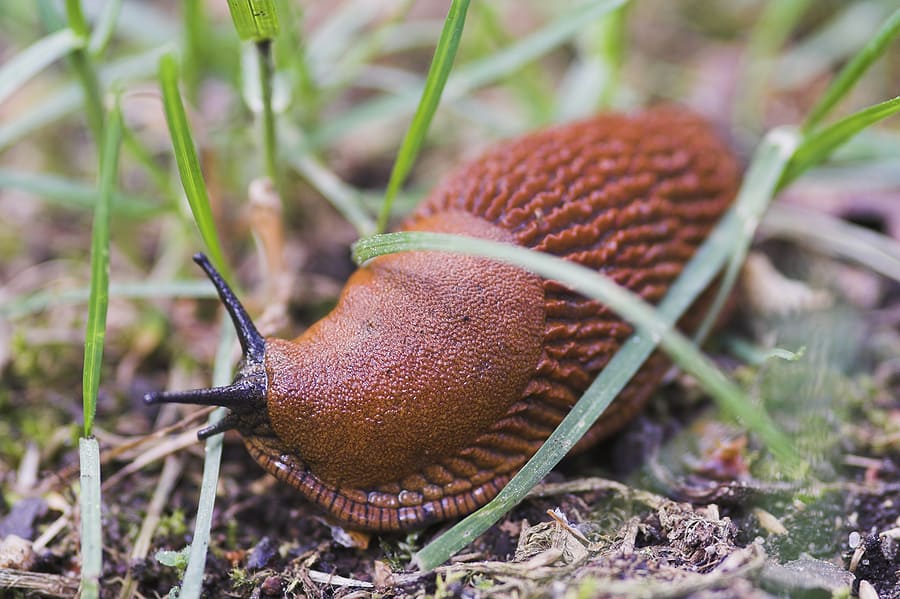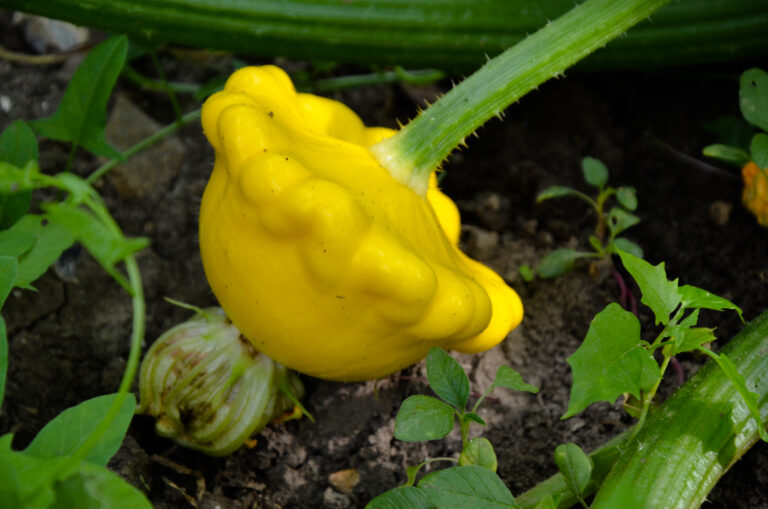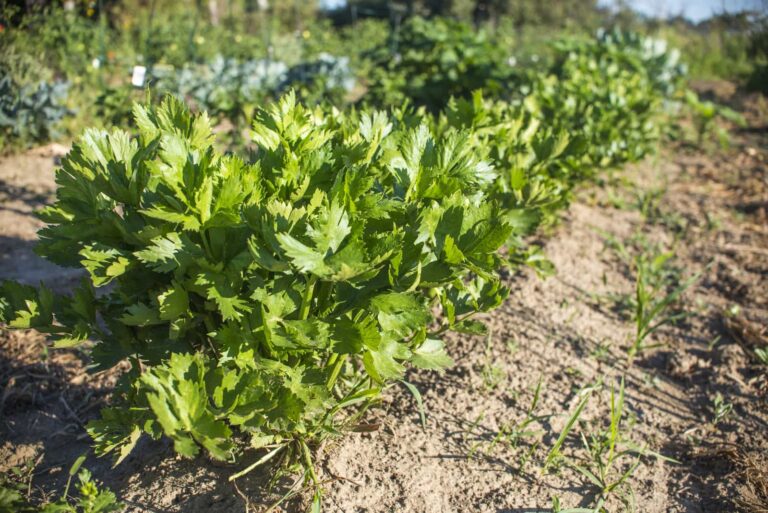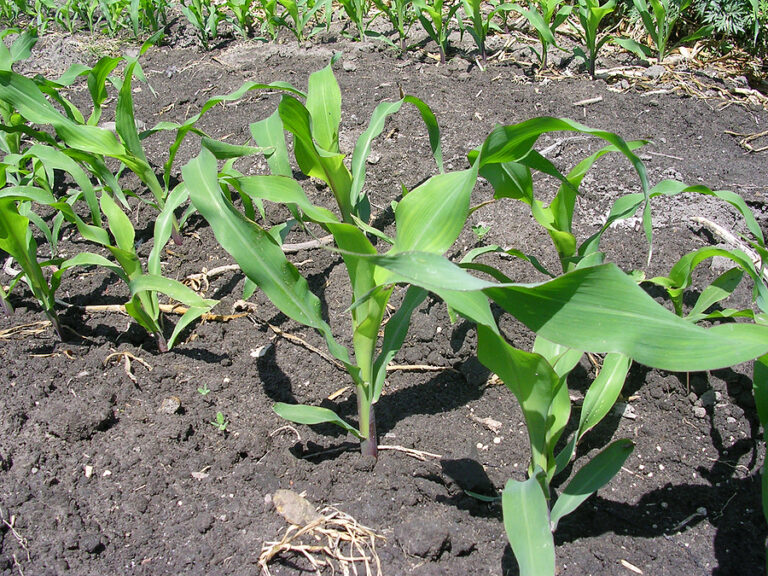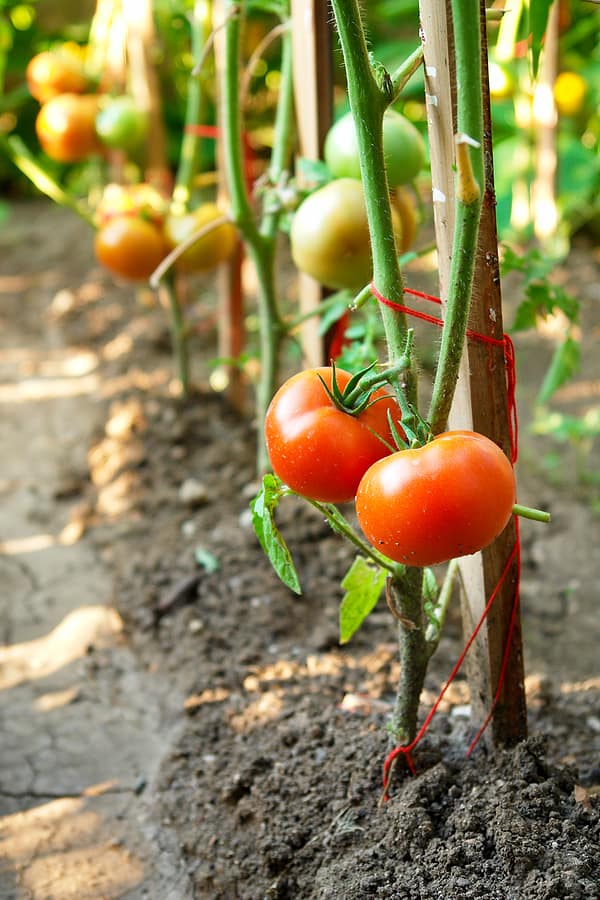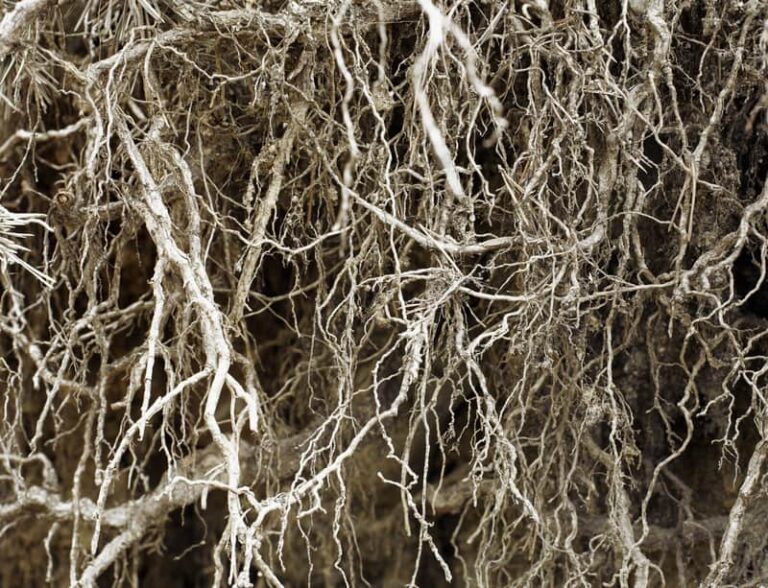Vegetable Garden Natural Organic Pest Control
Use natural organic methods to control vegetable garden insect pests. There are tried and true garden insect controls that have been around for thousands of years.
“Prevention is better than a cure” is an old adage that is true in the garden as it is in most areas of life. Today these techniques are commonly called integrated pest management (IPM) or organic pest management (OPM).
Fundamental to IPM or OPM is close observation—meaning getting into the garden often. Recognizing early on that a plant is stressed will allow you to take one or several steps to keep pests and diseases in check.
Most natural or organic method gardeners are willing to tolerate some level of pest or disease damage in order to avoid using more toxic synthetic controls. The trade-off is a healthier garden and a healthier overall environment.
Good Products for Pest and Disease Control at Amazon:
- Garden Safe Snail and Slug Bait
- Bonide Sulfur Fungicide
- Monterey BT Caterpillar Killer
- Neem Bliss 100-% Cold Pressed Neem Oil
- Safer Brand Insect Killing Soap
- PyGanic Botanical Insecticide
Natural organic pest control methods
Here are simply natural, organic ways to keep tight control of vegetable garden insect pests without spending a dime:
Site selection
Choose the best site and soil for the plants you are growing. This will reduce plant stress and susceptibility to disease and pests. Too much or too little sun, water, shade, and fertilizer can stress plants. Use aged compost to deliver all essential plant nutrients naturally. As well, compost-rich soil is well draining while holding soil moisture. Apply a 2-inch layer of aged compost to your garden twice a year.
Pest and disease-resistant plants
Choose resistant plant species or varieties. Check seed packets and plant labels for pest and disease resistance. Seed grower catalogs and websites will also list pest and disease resistance. In the garden mix plant families together to create diversity. This will help avoid the rapid spread of pests or diseases that attack specific plant groups. Keep a garden notebook; note problems and successes for future reference
Keep the garden clean
Keep the garden clean of plant debris. Pest insects often hide or shelter in dropped or dead leaves. Turn the soil in the fall or between plantings to expose pests to the elements. Cucumber beetles, flea beetles, and asparagus beetles are just a few of the pests that seek shelter in garden debris. Clean up the garden during the season and after the season ends. When a crop is finished, clean up and eliminate insect shelters. Fall cleanup is particularly important in reducing overwintering pests and getting a head start on next year.
Turn the soil
Using a garden fork or hoe to simply turn the soil between crops or at the end of the season will expose soil-dwelling pests and their eggs to sun, heat, and cold which will interrupt their life cycle. Light cultivation will also keep weeds at bay during the growing season and interrupt germination. Deep cultivation to 6 inches at the end of the season will expose soil-borne pests to the light and bury surface-dwelling insects. (This fall cultivation is also a good time to add compost to your soil.)
Handpick pests
Handpick insect pests off plants. Handpick slugs, snails, caterpillars, large adult insects, and egg masses; drop these pests into soapy water. Shake very small insects from plant leaves onto a piece of paper and dispose of them. One of the pleasures of gardening is being in the garden. So while you’re there scout for newly arrived insects on a regular basis, and use your thumb and finger to dispatch them. The best time to look for insect pests in the garden is during the middle of the day; most insects love the sunshine. Don’t forget to look under plant leaves for insect eggs; look for white, yellow, or reddish-brown eggs. If you suspect small insects are about, place a sheet of white paper under the plant and shake to expose them.
Pinch and prune plants
Prune or pinch to remove damaged and diseased leaves and branches. Pruning will also increase light and air circulation in the garden. Remove dead and diseased plants from the garden immediately.
Water spray
A strong spray of water from the garden hose will end the stay of small caterpillars, aphids, mites, scale, spittlebugs, and others. If an infestation has gotten out of hand, you may have to return more than once to get the upper hand on aphids and other colony-dwelling pests.
Barriers
Use pest barriers such as floating row covers or sticky bands or copper strips to exclude pests from plants and planting beds. A “collar” or ring of tar paper or cardboard pushed into the soil around a plant will deter cutworms and slugs. Cardboard, heavy paper, and aluminum foil collars around young seedlings and even more mature plants will keep chewing pests from attacking plant stems. A four-inch cardboard or aluminum foil square around the base of a cabbage plant will keep cabbage root maggots from laying eggs. Plant collars will also keep flies from laying eggs. For cutworms, extend the collar 1 or 2 inches into the soil around the stem of the plant.
Plant traps
Use sacrificial plants to trap insects. A trap or catch crop of early maturing radishes will lure flea beetles away from more substantial crops. Mustard can be used to trap harlequin bugs. Early sowing of one or two squash in pots will draw beetles away from your main crop. An unthinned patch of carrots will attract aphids leaving other crops pest free.
Traps and lures
Trap insects with lures—both visual and olfactory. For example, yellow sticky boards will control cucumber beetles, whiteflies, cabbage worms, and thrips; the yeast in shallow pans filled with beer will attract snails and slugs. Rolled, damp newspaper will attract earwigs.
Mixed plantings
By intermixing crops instead of planting each crop in concentrated rows or blocks, insects that attack specific plants have a harder time getting established; there’s just not enough of one crop in one place to make their efforts worthwhile. Mixing crops is particularly easy to do in small gardens.
Mulch
Mulches can help keep pests from laying eggs or harboring in the soil.
Beneficial insects
Attract insects that like to eat other insects. Encourage beneficial insects to take up residence in the garden. Release lady beetles, lacewings, spined soldier beetles, praying mantis, or trichogramma wasps to help control pest insects. Grow plants that will provide nectar and pollen for beneficial insects; many beneficial insects are attracted to the herbs dill, caraway, fennel, spearmint, and lemon balm. Lacewings, ladybugs, parasitic wasps, syrphids, and hoverflies are beneficial insects. Lacewings are attracted to carrot family plants and oleanders. Lady bugs are attracted to Angelica, goldenrod, morning glory, oleander, and Yarrow. Parasitic wasps are attracted to carrot family members, goldenrod, oleander, and strawberries. Syrphid flies and hoverflies are attracted to members of the daisy family. Give beneficial insects a reason to visit and stay in your garden.
Infectious microorganisms
Bacteria, fungi, or viruses—infectious microorganisms—can be used to injure or kill some garden insect pests. The most commonly used microbial insecticide is Bacillus thuringiensis (Bt) a species of bacteria that produces a toxin poisonous to many common insect pests. Check with a local nursery or garden center for microbial insecticides.
Nontoxic sprays
Most insect pests can be controlled with relatively nontoxic sprays. A forceful spray of water from the garden hose is one of the easiest ways to dislodge pests. Insecticidal soaps, horticultural oils, and insecticides made from plant extracts such as neem, pyrethrum, or sabadilla are natural alternatives to synthetic pesticides.
Rotate crops
Changing where you plant specific crops from year to year will break up the life cycle of rootworms and nematodes that feed on the same plants. Move crop families to another part of the garden every year if possible.
Organic Insecticides
Insecticides are substances used to control insect pests.
There are insecticides derived from plants, animals, and natural mineral sources, and there are pesticides derived from synthetically produced chemicals.
Naturally derived pesticides are often accepted for use on or around organically grown vegetables and fruits. Synthetically produced insecticides are not used in natural or organic gardening or farming.
Naturally occurring or “organic” pesticides include materials extracted from plants, animals, or mineral-bearing rocks substances as well as microorganisms and microbiological products.
Here is a list of insecticides commonly used in organic gardening and how they are used: —
Bacillus thuringensis
Bacillus thuringensis is a microbial insecticide. Bacillus thuringensis also called BT is a type of soil-dwelling bacterium that kills leaf-eating caterpillars (moth and butterfly larvae), beetle larvae, and mosquito larvae when they ingest it. The bacterium spores germinate into plants inside the larvae’s stomachs, grow, and eventually take over and kill the victim. BT commonly comes in the form of a soluble powder; the powder is suspended in water and sprayed on plant surfaces where it is then ingested by insects. It is safe for humans. Insects controlled by BT include cabbage worms, cabbage loopers, corn earworms, European corn borers, tent caterpillars, fall webworms, codling moth worms, peach tree borers, and gypsy moth caterpillars.
Diatomaceous earth
Diatomaceous earth is an inorganic insecticide. Diatomaceous earth is derived from the sedimentary deposits formed by the skeletons of microscopic marine organisms. The remains from diatomite—silica—which is ground into an abrasive dust. To soft-bodied insects such as caterpillars, the dust is razor sharp and causes cuts that result in the loss of body water. The cuts cause insects to die naturally from dehydration. Diatomaceous earth can be used against aphids, cabbage loopers, codling moths, Colorado potato beetles, cucumber beetles, cutworms, Mexican bean beetles, some fruit and root maggots, slugs, snails, thrips, and tomato hornworms. It is usually applied as dust around the base of plants and upward from the ground covering stems and leaves. Diatomaceous earth is digestible and harmless to earthworms, mammals, and humans, though some forms of diatomaceous earth can be hazardous if breathed in. Use the “natural grade” in gardens, not the type used as a filtering agent in swimming pools.
Kaolin clay
Kaolin clay is a mineral used as a barrier to repel insects and disguise host plants by coating them with a white clay-dust film. Insects seem unable to recognize plants treated with kaolin. Kaolin is used against cucumber beetles, Colorado potato beetles tarnished plant bugs leafhoppers, thrips, and Japanese beetles. Kaolin is a barrier preventative; it is not effective once a pest is already established. Kaolin is mixed with spreaders and stickers and then applied to plants. The kaolin barrier created by the particle film also protects the treated plant surfaces from diseases. Kaolin is generally regarded as safe for humans.
Nematodes
Nematodes are microscopic soil-dwelling worms, many less than 1/16-inch long. There are beneficial nematodes and pest nematodes. Beneficial nematodes attack cutworms, root weevils, corn and stem borers, squash vine borers, and some pest root nematodes. Beneficial nematodes enter insects through their natural body openings. Once inside, they release a bacterium that paralyzes and kills the insect. The nematodes then feed on the tissue of the insect carcass and also eat the bacteria. Three beneficial nematodes are Steinernema carpocapsae which attacks cutworms, armyworms, corn rootworms, and fire ants; Steinernema fetiae which attacks root-knot nematodes, ring nematodes, and string nematodes; Heterorhabditis bacteriophora which attacks cabbage root maggots, Colorado potato beetle larvae, white grubs, and root weevils. Beneficial nematodes come packaged in a gel, in a power, or mixed with peat and vermiculite. They are commonly mixed with water before being applied with a watering can or sprayer to the soil or plants, or injected into plant stems by syringe.
Neem
Neem is an insecticide derived from seeds of the neem tree (Azadirachta indica). The active ingredient is azdirachtin. Neem is used to control a wide variety of insects including leafminers, whiteflies, thrips, caterpillars, aphids, mealybugs, spider mites, scale crawlers, and beetles. Neem oil is most effective against actively growing immature insects; it kills by suffocating the insect, the same as horticultural oil spray but with the addition of some insecticidal properties. Most neem oil products are available as concentrates made to dilute with water in a sprayer, but some are available as ready-to-spray.
Horticultural oils
Horticultural oils—also called insecticidal oils are plant-based (organic) or petroleum-derived (not for organic gardens) insecticides. Organic insecticidal oils are made from oilseed crops such as soybean, rapeseed (canola), or cottonseed. Horticultural oils are effective at killing insect eggs and immature insects, notably small soft-bodied pests such as whiteflies and aphids. Insecticidal oils are usually applied with an emulsifier and mixed with water. Horticultural oils are nonselective, meaning they kill both pests and susceptible beneficial insects. The oil works by smothering the insects or their eggs or disrupting the way they feed. The insect must be thoroughly coated with the oil in order for it to work. Once the oil dries on a plant it will have no effect on insects. Horticultural oils also control powdery mildew and the spread of plant viruses transmitted by aphids. There are both heavy and light horticultural oils. Heavy oils are applied to deciduous trees and shrubs during the winter months. Light oil formulations—called summer, superior, or supreme oils—can be sprayed on plants with foliage.
Pheromones
Pheromones are natural chemical attractants produced by insects that can be used by humans to bait insect traps. Pheromone traps are used to attract and catch large numbers of specific insects to reduce future reproduction and generations. A pheromone is a chemical substance produced and released into the environment by an insect (or an animal) that affects the behavior or physiology of others of its species; it can arouse sexual interest or act to call others together. A pheromone trap uses pheromones to lure insects into the trap; for example, often a powder made from female pheromones is used to attract and catch males, or the pheromone powder sticks to the males’ bodies and when they fly off they are attractive to other males instead of females and thus egg-laying is disrupted.
Pyrethrin
Pyrethrin and pyrethrum are often used interchangeably to refer to an insecticide made from a species of chrysanthemum flower (Chrysanthemum coccineum). The word pyrethrum is the name used for both the flower and the dust extracted from the flower. The term pyrethrin refers to the insecticidal compounds that are extracted from pyrethrum. Pyrethrin is a contact insecticide; it must come in contact directly with an insect to be effective. Pyrethrin paralyzes insects almost instantly, but may not kill them. A flying insect will drop immediately when hit with pyrethrin. Pyrethrins are often formulated with another poison to ensure that paralyzed insects die. Pyrethrin controls pests including aphids, beetles, moth larvae, mealybugs, thrips, flies, and mosquitoes. Pyrethrin is non-toxic to most mammals, making it among the safest insecticides in use. It is the most widely used botanical insecticide used in the United States. Pyrethroids are synthetic insecticides designed to imitate natural pyrethrum; they are not natural or organic.
Rotenone
Rotenone is an insecticide derived from the ground-up roots of some plants in the bean family. The roots are ground into dust and used to poison potato beetles, cucumber beetles, flea beetles, asparagus beetles, cabbage worms, weevils, slugs, loopers, mosquitoes, thrips, and flies. Rotenone is both a contact and stomach poison but it is slow-acting taking several days to kill an insect though the insect will stop feeding almost immediately after ingesting rotenone. In warm weather, the residual effect of rotenone lasts just a few days. It is non-toxic to honey bees. Rotenone-containing plants have been used for centuries by native peoples to disable fish– rotenone interferes with cellular respiration; fish exposed to rotenone gulp for air and rise to the surface where they are more easily caught. Rotenone is moderately toxic to mammals, and highly toxic to fish and aquatic life.
Sabadilla
Sabadilla is an insecticide derived from the ground seeds of the sabadilla plant, Schoenocaulon officinale. Sabadilla is both a contact and stomach poison; it is used to control caterpillars, leafhoppers, squash bugs, harlequin bugs, stink bugs, Mexican bean beetles, and citrus thrips. Sabadilla causes the loss of nerve function, paralysis, and death; some insects are killed immediately others will be paralyzed for several days before dying. The active ingredient in sabadilla is an alkaloid known as veratrine. Wear a mask when applying sabadilla; it can cause lung and nose irritation and severe headaches. Little, if any, of the residue is left after the application of sabadilla because it breaks down rapidly in sunlight.
Insecticidal soap
Soaps or insecticidal soaps damage the protective coat of soft-bodied insects such as aphids, leafhoppers, and spider mites causing them to dehydrate. Some larger insects, such as Japanese beetles, are also susceptible. Soaps act on contact so they must be applied directly to the target insect pest to work. Some insects may die within a few minutes of exposure. The residual effect is lessened when the soap dries rapidly which can happen in warm weather. Soaps are sometimes combined with other insecticides such as pyrethrin to increase their effectiveness. Dilute solutions of liquid dishwashing detergents can be used as soap insecticides, but it is important to test the spray on a leaf or two first to make sure plants are not accidentally injured.
Spinosad
Spinosad is an insecticide derived from chemical compounds found in the soil-dwelling bacterium Saccharopolyspora spinose. Spinosad controls dozens of insect pests including caterpillars, loopers, leafminers, bagworms, borers, beetles, spider mites, thrips, spider mites, ants, fruit flies, and mosquitoes. Spinosad is primarily a stomach poison. It causes insects to stop eating immediately; the insects usually die within two days. It is most effective against insect larvae. Spinosad is active for five to seven days, but once dry it only kills insects that ingest it. If sprayed in the evening, spinosad is less likely to harm beneficial insects. Spinosad is a relatively new pesticide; it was discovered in 1982 in an old Caribbean rum still.
Using insecticidal soaps
Insecticidal soaps kill soft-bodied pests including mites, aphids, immature scales, psyllids, thrips, and whiteflies. Soaps also kill the eggs and larvae of many pests.
Soaps are contact insecticides; they must be sprayed wet directly on the insect pest to be effective. To treat a severe pest infestation, spray a plant or crop every 2 or 3 days for two weeks. Once the soap spray dries, it has no residual insecticidal effect.
Insecticidal soaps are not toxic to people, pets, or wildlife, but it is best not to inhale soap spray or get it in your eyes.
Insecticidal soaps are made from potassium salts of fatty acids, also called soap salts. You can buy insecticidal soaps at garden centers or nurseries or you can make your own.
How to make insecticidal soap
Make insecticidal soap by adding 2 tablespoons of vegetable-oil-based liquid soap such as castile soap to 1 gallon of water. Do not use laundry detergent or liquid dish soap. (Soaps are made with olive oils and vegetable oils—renewable resources. Detergents are made from petroleum-based oils and nonrenewable resources.) Use a soap with no additives or perfumes which may harm plants.
Applying insecticidal soap
Apply insecticidal soap with a spray bottle. Spray directly on insect pests. Spray the tops and undersides of leaves where pests lay eggs and hide and all growing points of plants—tender tissue that insect pests feed on.
Insecticidal soaps kill by damaging the outer cell membranes or coating of the insect causing dehydration and paralysis. All soft-bodied insects sprayed with soap will be harmed or killed including beneficial insects, so be careful to spray only the insects you want to kill.
Before spraying an entire plant or crop, test spray a leaf or two on one plant from a crop then wait a day or two to make sure the soap does not damage the plant. Some very tender plant leaves may be burnt by soap sprays.
- Spray early in the morning when plants are still wet with dew or late in the afternoon or after sunset when temperatures are moderate. Avoid spraying at midday in the hot sun—the soap will dry before it can work.
- Spray both sides of the plant’s leaves; many pests feed on the undersides of leaves or take shelter there when they detect movement or light changes that might indicate danger.
- Do not treat heat- or water-stressed plants; the soap coating on leaves may hinder transpiration the exchange of gases and moisture through leaf pores.
- Soaps may damage some plants, especially those with dull leaf surfaces or hairy surfaces.
- Soaps are less effective or may have no effect on adult pests with hard outer coatings or shells such as beetles.
- Insecticidal soaps only work while wet. To be sure you get all or most of the pests on a plant, spray several times a week for three weeks. Keep an eye out for pests to know when it is time to spray again.
- Spray plants every 2 to 3 days for two weeks or more for severe infestations.
- Store-bought insecticidal soap usually calls for two teaspoons of soap per pint of water. Always follow the directions on the label.
- The least invasive pest control is spraying or washing infected plants with water to dislodge harmful pests.
Insect deterrent plants
Some plants will deter insects in the vegetable garden. This is one form of companion planting. Companion planting–growing plants singly or together–to repel insects, fight disease, or enhance the growth of another plant is a technique that many gardeners have used for generations. Some companion plants have been scientifically proven to deter insects; some companion planting combinations are anecdotal or attributed to “garden wisdom.”
Repelling insects by creating effective crop combinations uses plants’ natural fragrances, oils, compounds, and colors to chase pests away. For example, some aromatic compounds may mask the scent of companion plants: the aroma of garlic will chase away bean beetles and potato bugs. And the color of some plants will confuse some insect pests and send them on their way before they can do any harm.
One way to get started with companion planting is to draw on the science and wisdom of gardeners. Try some of these combinations and draw your own conclusions based on your observations and planting successes. Keep a record of what works and let others know.
The companion plantings in this chart are aimed at deterring pests from the garden. Note that there are also companion plantings that will attract beneficial insects to your garden.
| Plant | Insects and Pests Deterred | Plant Near |
|---|---|---|
| Asters | Most insects | Sunflower, plant around the garden |
| Basil | Flies and mosquitoes | Tomato; avoid planting near rue |
| Borage | Asparagus beetles, tomato hornworms, and most insects | Tomato, cabbage family crops, strawberry |
| Calendula | Tomato; avoid planting near Rue | All vegetables and herbs |
| Catnip | Flea beetles, spittlebugs, ants, Japanese beetles, weevils | All vegetables |
| Celery | White cabbage butterfly | Leek, tomato, cabbage, cauliflower, bush bean |
| Chrysanthemum | Most insects, nematodes, spider mites | Tomato; avoid planting near lettuce |
| Dead Nettle | Potato bugs | Potato |
| Eggplant | Colorado potato beetle | Green bean, lettuce |
| Flax (Linnum usitatissimum) | Potato bugs | Potato, carrot |
| Garlic | Japanese beetle, aphids, spider mites, other insects, and blight | Cabbage worms, corn earworms, Japanese beetles, most insects |
| Geranium | Asparagus beetles, tomato worms, and general garden pests | Interplant with vegetables, especially cabbage |
| Horseradish | Potato bug | Potato, horseradish needs a permanent home |
| Henbit | Most insects | |
| Hyssop | Cabbage moth | Cabbage family, orchards, grapevines; avoid planting near radishes |
| Marigold | Nearly all insects including Mexican bean beetles and nematodes | Potato, tomato, pepper, eggplant, roses |
| Mint | Cabbage moth and ants | Cabbage, tomato |
| Mole plant(Euphorbia lathyrus) | Moles, gophers, mice | Space around the garden every 5 feet as a barrier |
| Nasturtium | Aphids, squash bugs, striped pumpkin beetles, whiteflies | Beans, cabbage family plants, cucumber |
| Onion family | Most pests, Colorado potato beetles, carrot rust flies, spider mites | Most vegetables except peas, beans, sage |
| Petunia | Bean pests, Mexican bean beetles, potato bugs, squash bugs | Beans, squash, potato |
| Pot Marigold | Asparagus, tomato, and most vegetables | Squash, and potato; avoid planting near collard |
| Peppermint | White cabbage butterfly | Cabbage |
| Radish | Cucumber beetles, squash borers | Beans, carrot, cucumber, kohlrabi, parsnip, onion, squash |
| Rosemary | Cabbage moth, bean beetle, carrot fly | Beans, cabbage family plants, carrot |
| Rue | Japanese beetle | Avoid skin contact; do not plant near cabbage family plants |
| Sage | Cabbage moth, carrot fly | Plant with perennial vegetables; avoid planting with cucumbers and rue |
| Salsify | Carrot fly | Carrot family plants |
| Southernwood(Artemisia abrotanum) | Cabbage moth, black aphids | Cabbage family plants or make a southernwood-water solution to spray cabbage |
| Summer Savory | Bean beetles | Beans, onion |
| Tansy | Flying insects, Japanese beetles, striped cucumber beetles, squash bugs, ants | Squash, potato; avoid planting near collard |
| Thyme | Cabbage worm | Eggplant, cabbage, potato, tomato, almost all vegetables, and herbs |
| Tomato | Asparagus beetle | Asparagus, dill, borage |
| Wormwood(Artemisia absinthium) | Carrot fly, white cabbage butterfly, black flea beetle | Do not plant wormwood in the vegetable garden, but leaves used to make a spray will deter insects. |
Identifying garden pests
Underground and nocturnal pests
These pests live underground or feed at night; they are not commonly visible: cutworms, grubs, root maggots, and wireworms.
Chewing pests
Most chewing pests feed on the outside of a plant: ants, asparagus beetles, Mexican bean beetles, blister beetles, cucumber beetles, flea beetles, potato beetles, squash vine borers, cabbage loopers, cabbage worms, corn earworms, grasshoppers. hornworms, parsley caterpillars, leaf miners, slugs and snails.
Sucking pests
These pests suck plant juices: aphids, leafhoppers, spider mites, thrips, and whiteflies.
Pests and organic controls overview
These controls include the biological insecticides rotenone, sabadilla, and pyrethrum; these are organic controls but they are poisons that can affect other life forms other than the target pests.
Aphids
- Aphids: Foil mulch; soap-and-water spray; water spray; yellow sticky trap; garlic spray; insecticidal soap; neem; rotenone; predators–green lacewings, ladybugs.
Beetles
- Asparagus beetle: Handpick; neem; rotenone dust on serious infestations; predators–green lacewings, ladybugs, praying mantids.
- Blister beetle: Handpick-wearing gloves; sprinkle plants with diatomaceous earth; beneficial nematodes.
- Colorado potato beetle: Handpick remove eggs; Bacillus thuringiensis; neem; keep garden clean; heavy mulching; beneficial nematodes; predators–green lacewings, ladybugs praying mantids, spined soldier bugs; use rotenone for serious infestation.
- Cucumber beetle: Handpick; cover plants with row covers or cheesecloth; neem or soap spray; beneficial nematodes; predators–green lacewings, ladybugs, praying mantids; use rotenone or pyrethrum for pernicious infestations.
- Flea beetle: Dust plants with diatomaceous earth; neem oil soap; beneficial nematodes; use rotenone.
- Japanese beetle:
- Mexican bean beetle: Handpick; beneficial nematodes; predators–green lacewings, ladybugs, praying mantids, spined soldier bugs, Trichogramma wasps; use rotenone or pyrethrum dust.
Bugs
- Harlequin bug: Handpick; control weeds; use turnips as a trap crop; pyrethrum for serious infestations.
- Squash bug: Handpick; keep garden clean; crop rotation; plant resistant varieties; garlic spray; predator praying mantids.
- Tarnished plant bug: Keep the garden clean.
- Carrot weevil: Rotate crops; keep the garden clean.
Caterpillars
- Cabbage looper: Handdpick; apply Bacillus thuringienesis for serious infestations.
- Corn earworm: Apply a drop of mineral oil to silks then remove the pests after silks have browned; use Bacillus thuringiensis for serious infestation.
- Cutworm: Protect seedlings with collars; sprinkle diatomaceous earth around the base of plants.
- European corn borer: Handpick; make relay plantings.
- Imported cabbage worm: cover plants with cheesecloth; handpick; use garlic spray; sprinkle with diatomaceous earth; apply Bacillus thuringienesis for serious infestations.
- Pototao tuberworm: Remove infested vines or tubers; keep the garden clean.
- Squash vine borer: Alter planting dates; when an infestation occurs, slit the stem, remove the borer, and rebury the stem; bury every fifth leaf node to keep the plant growing.
- Tomato hornworm: Handpick; if there is a papery cocoon on the back, this is a natural parasite.
Flies (maggots)
- Cabbage maggot: Dust base of plant with diatomaceous earth, or phosphate rock; beneficial nematodes..
- Carrot fly: Alter planting dates, keep the garden clean, and sprinkle plants with phosphate rock during the egg-laying season.
- Leafminers: Remove and destroy infested leaves; cover plants with row covers; yellow sticky traps, beneficial nematodes; neem; predators–green lacewings, ladybugs, praying mantids.
- Onion maggot: Don’t concentrate onion plantings; dust plants with diatomaceous earth; beneficial nematodes, insecticidal soap.
- Pepper maggot: Remove and destroy infested plants; sprinkle plants with diatomaceous earth in midsummer during egg-laying season.
Other pests
- Leafhoppers: Insecticidal soap; neem; neem oil soap; dust plants with diatomaceous earth; protect plants with row covers in early summer.
- Slugs/snails: Copper tapes or foil barrier; diatomaceous earth; slug and snail traps; wood ashes.
- Whiteflies: Spray with soapy soap water; yellow sticky traps; garlic spray, insecticidal soap; neem; neem oil soap; predators–green lacewings, ladybugs, praying mantids.
- Wireworms: Rotate crops; keep the garden clean; trap wireworms in pieces of potato buried 1 inch below ground.
Related articles:
Vegetable Garden Organic Weed Control
Vegetable Garden Organic Pest Control
Vegetable Garden Diseases Problem Solver
Garden Planning Books at Amazon:

